MODEL THIS: Loopita Bonita Lounger
-
It has been a while since we have started a "Model This" thread and when I saw this piece yesterday I thought it would be a suitable subject.
You know the drill but if not, this is not a competition it is a thread for sharing techniques and marveling in the awesomeness of another's modeling prowess.

This is the Lopita Bonita lounger by Mexican industrial designer Victor M. Aleman.
There is an indoor "smooth" version but this one seemed like more of a challenge.Take your time and use any tool possible. Share your techniques, progress, and have fun.
And I will award 1500 points to anyone who models the girl too.
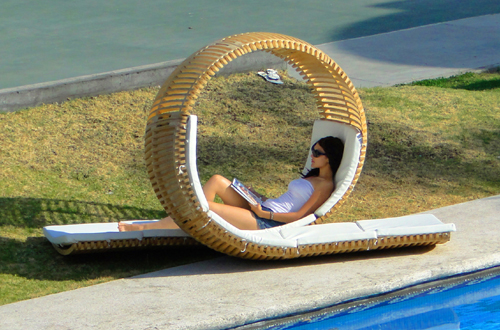

-
@unknownuser said:
it is a thread for sharing techniques and marveling in the awesomeness of another's modeling prowess.
that counts me out

BTW . . .that lounger.. . doesn't look very portable does it? Not really something you could cart to the beach. . .
-
There's gotta be a ruby for that, surely?

-
Early draft....
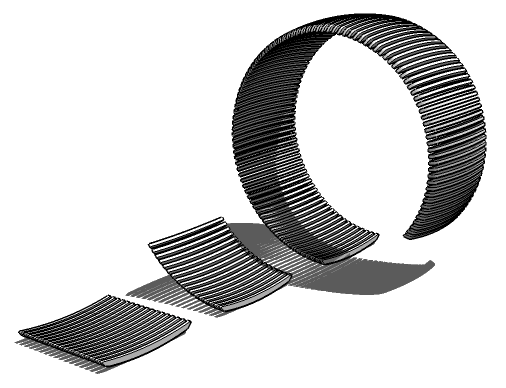
I figure it's 7 sections for the curve at 51.42 degrees. But getting helix is making my head hurt.
Really great challenge thanks Eric

-
Use the helix ruby.
-
Making a helix isn't the problem. Turning this into one is.
I'll problem do the maths and make it as it should be. Just wanted to see if fredo's shearing tools would make lighter work of it.
-
What stringer tool did you use?
-
None yet. Want to see if I can do with vanilla tools. I'd imagine Chris' stringer would make it easy. Maybe even shapebender.
-
Great start!
-
I wish I could join this challenge, but I'm no good at organic modeling. I'd never be able to recreate her.
-
Here is my try at it
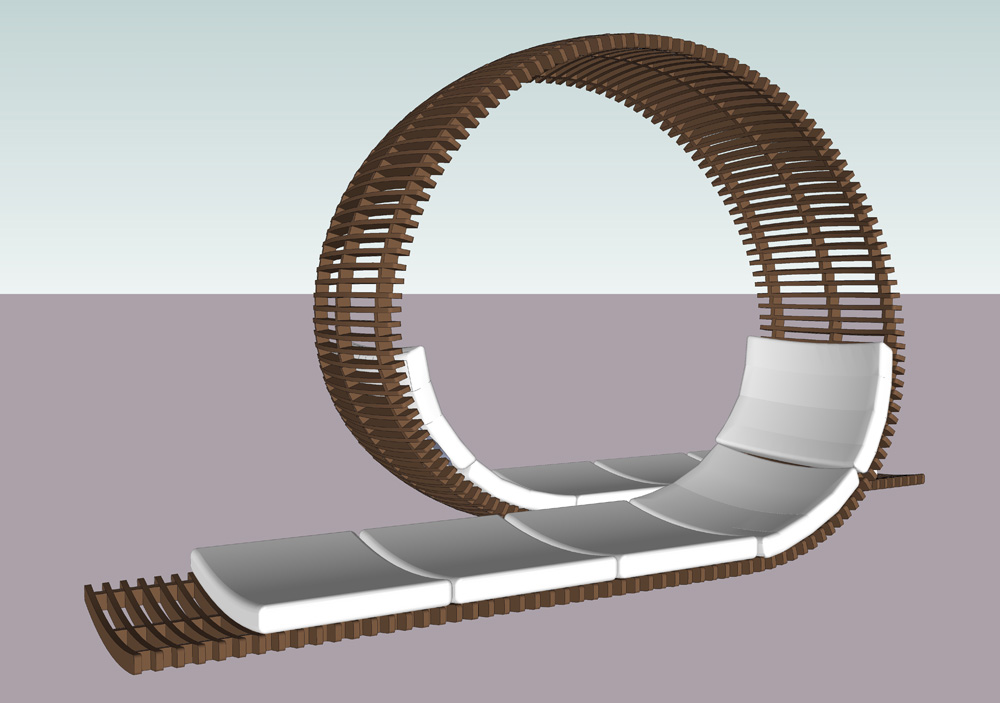
-
i don't have the time right now to draw all the details/fine tune etc. but here's 5 minutes worth of an idea
 (if you have suPRO)
(if you have suPRO)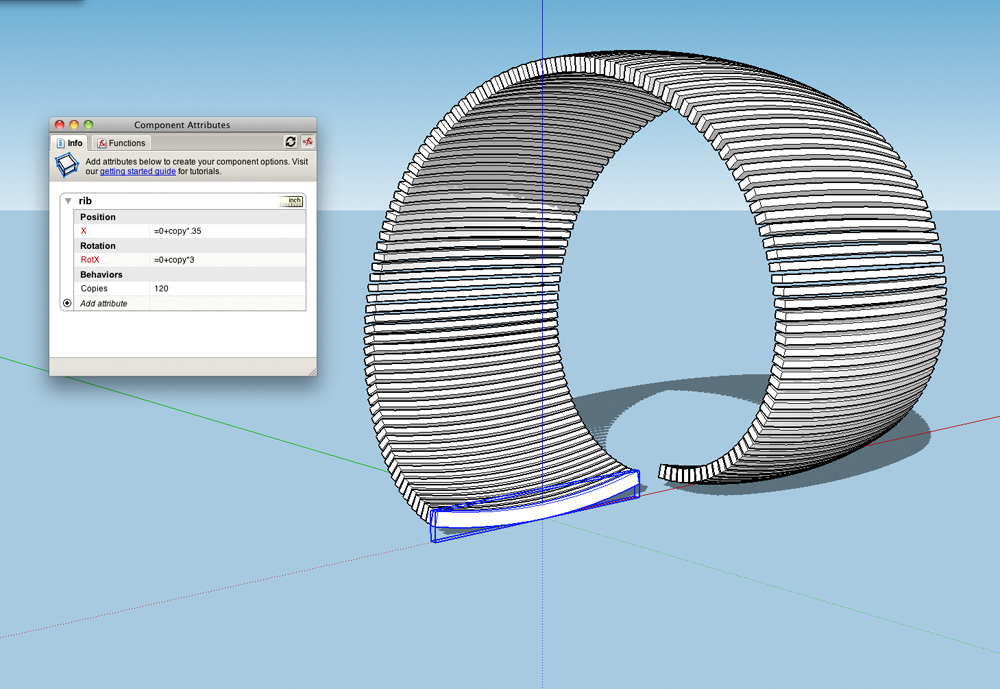
****[edit]- and i guess i'll add that i'm lobbying for dynamic component usage here.. i've lately started to realize that DCs have more/less been sold as one thing when they are in fact more than making a cabinet with different sized drawers (or whatever).. they can be used as a calculator for actual drawing as shown in this example (or i like to think of them as the ability to quickly produce very specific plugins for the task at hand?)
i think if more people started using them and/or their popularity increased then the SUteam may be more inclined to update/add functionality etc.. -
@unknownuser said:
at organic modeling
It's not organic modeling, it's CAD Modeling

@unknownuser said:
DCs have more/less been sold as one thing when they are in fact more than making a cabinet
Yes Dynamic Components are very under used!

But you must make some efforts, it's not "Spontaneous generation" !
-
@unknownuser said:
Yes Dynamic Components are very under used!

But you must make some efforts, it's not "Spontaneous generation" !
right, the geometry has to be there in the first place, but, with little bit of creativity, you have all the geometry you need..
lines can be hidden unless needed and you can use copies to generate new lines etc..
pretty much the main problem with DCs right now is that you can't control lines/faces unless you make them separate components in which case they lose their ability to make faces in the main component. -
Jeff,
How does it work? Interact doesn't do anything? I never use DC's so forgive the ignorance.
-
@unknownuser said:
Jeff,
How does it work? Interact doesn't do anything? I never use DC's so forgive the ignorance.
fwiw, i never use interact..
this version is just the raw version of how i'd use it as a calculator while drawing.. i'll make a more polished version w/ user input etc in a little bit..
-
This calculator will works only with the Loopita Bonita Lounger model or it's will be universal?
-
Not quite identical but I enjoyed the actual maths more than the model. I'll finish the cushions tomorrow if I've time.
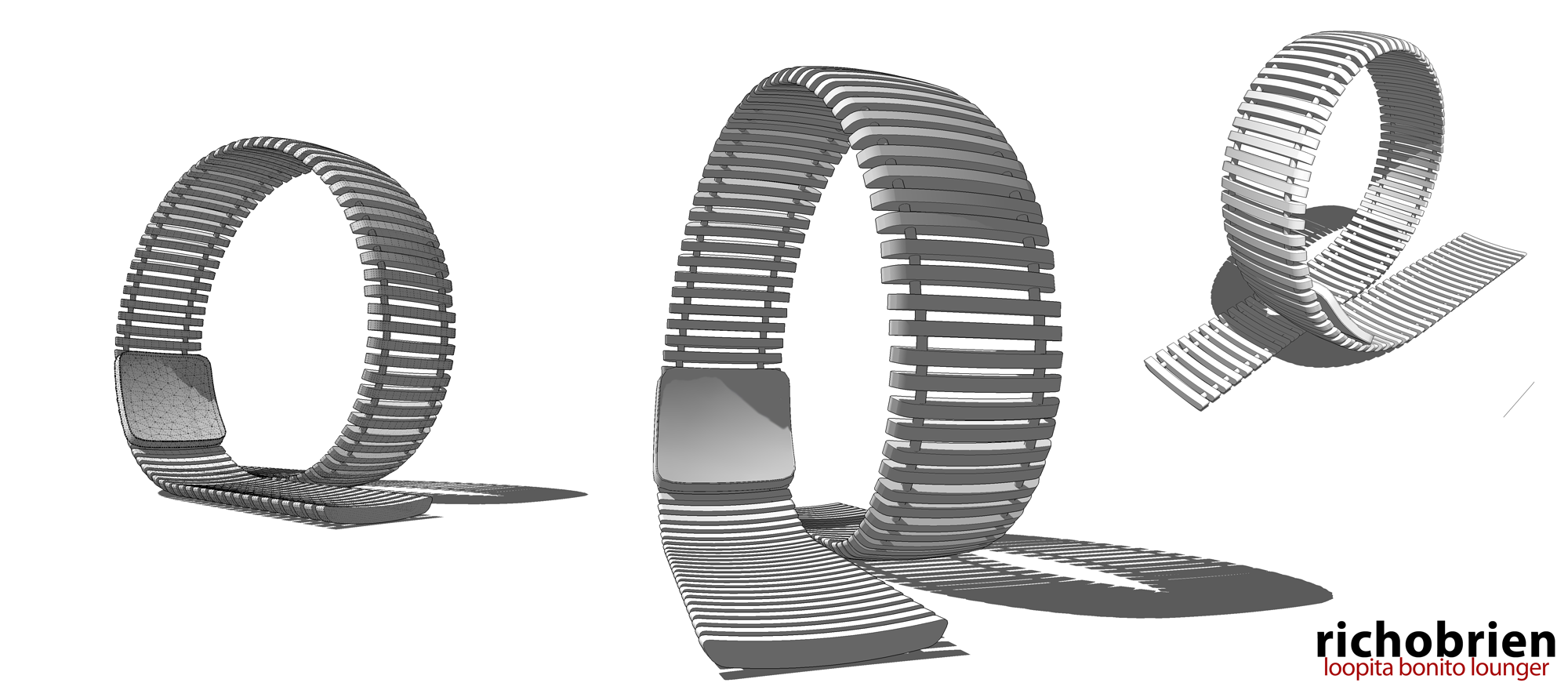
Make for a nice Render This also

-
Rich, that looks great, I never use DC's so I'm stumped.
I want to use some sort of stringer but cannot find one that strings perpendicular to the path...anyone know if one exists?
-
re: the DC.. look at the screen shot --
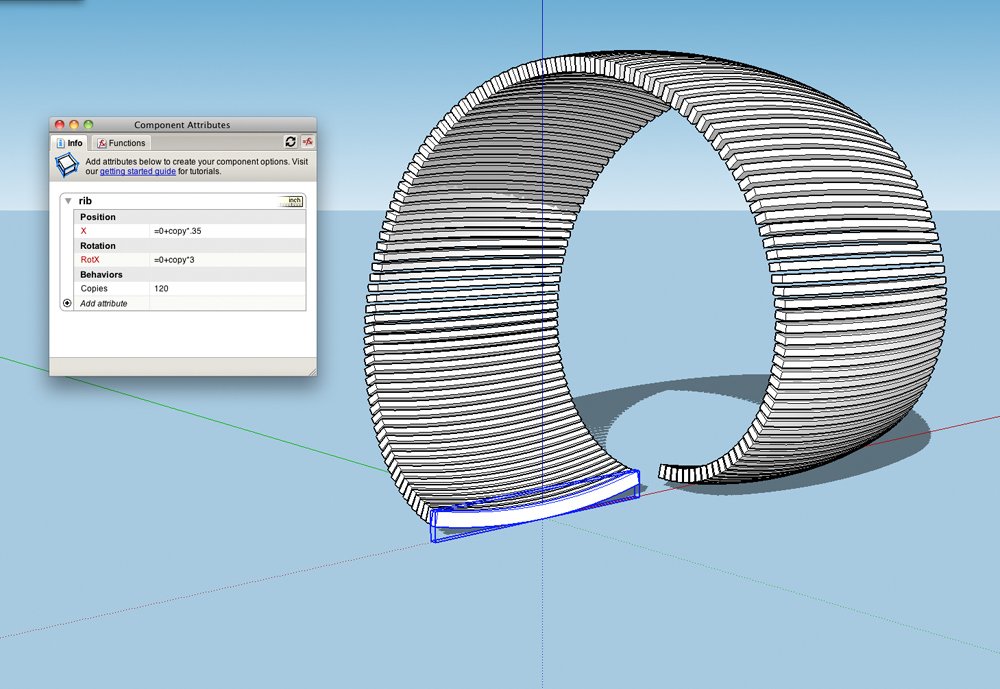
those are all the functions i used showing in the component attributes dialog..
i made the rib and set it's axes to 2 1/2' above it as i figured i'd make a 5' inner radius.. (this is changeable if you want and i'll include a height example in the user friendly dc i make of this)..
i put 120 for the amount of copies meaning the rib component will be copied 120 times.. for rotX (rotation around the X axis) i put:
RotX=0+copy*3
which means the first rotated copy will be rotated 0º then every copy there after will be rotated 3º (and 3º * 120 copies = a full circle)for position X (position along the red axis), i put:
PosX = 0+copy.35"*
which means the first copy will not move sideways along the red (or 0) then each copy after that will shift .35" to the right along the red..
Advertisement







